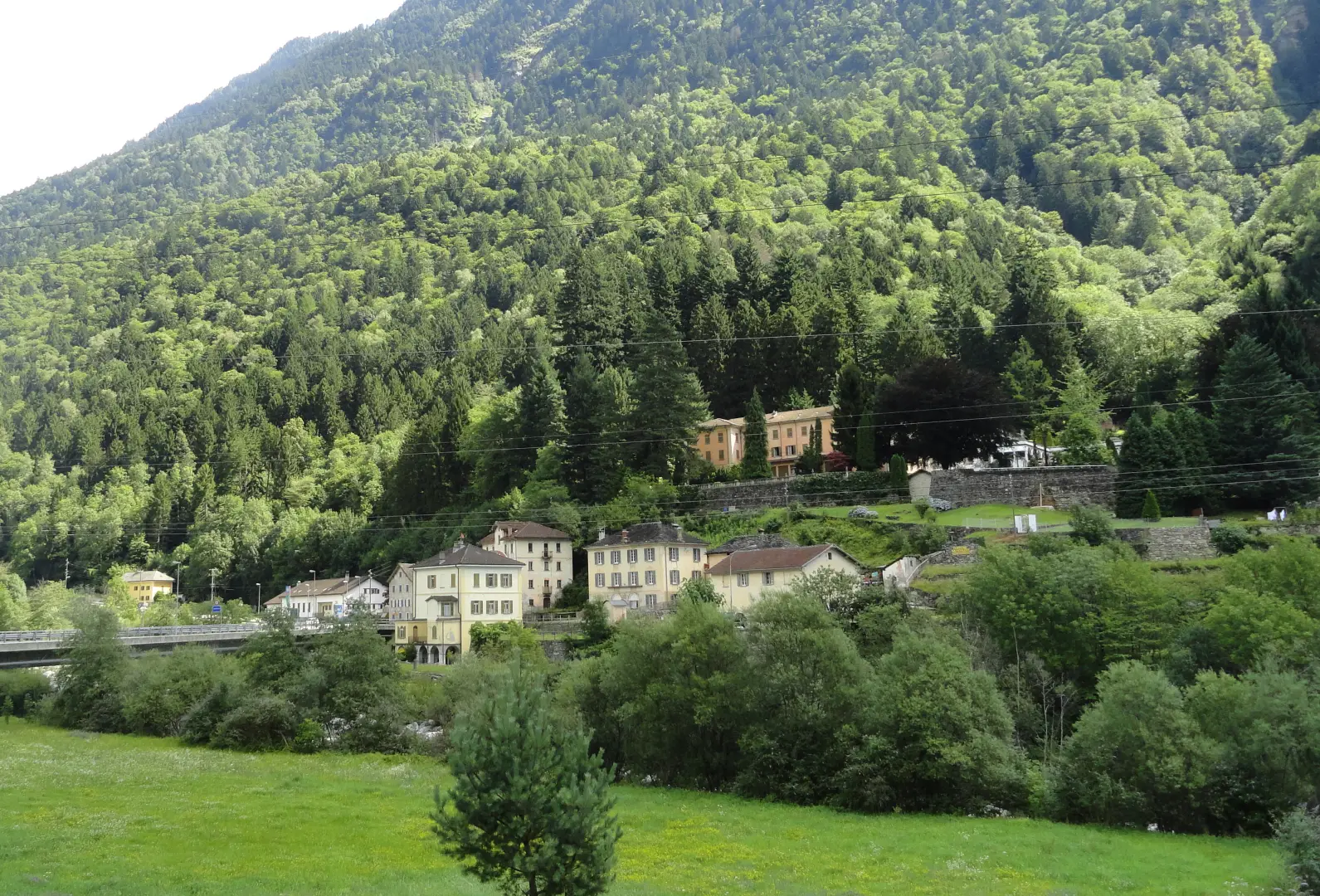Acquarossa

Access
The municipality can be reached by car from Bellinzona (45 minutes) along the cantonal road , while the nearest railway station is Biasca, on the Gotthard line. The Milan-Malpensa international airport is 120 km away, while the Zurich airport is 150 km away.
.Introduction
Acquarossa is a Swiss municipality in Canton Ticino, located in the Blenio valley, about 60 km north of Bellinzona. With an altitude ranging between 400 and 2,000 metres, the territory extends between green mountain slopes and chestnut forests, offering a typical Alpine landscape with Mediterranean influences. The municipality was created in 2004 from the merger of five historical localities - Castro, Corzoneso, Dongio, Largario, Leontica, Lottigna, Marolta, Ponto Valentino and Prugiasco - becoming an administrative and cultural centre of the valley. Its location, along the ancient Via del Lucomagno, made it a crossroads between the north and south of the Alps for centuries, with a rich history of commercial and cultural exchange. Today, Acquarossa is appreciated for its tranquillity, unspoilt nature and well-preserved Ticino traditions.
Description
The territory of Acquarossa is characterised by a varied morphology: to the south, the valley widens into gentle cultivated slopes, while to the north the peaks of the Ticino Alps rise up, including the Pizzo Molare (2,450 m) and the Pizzo Campo Tencia (3,072 m). The Brenno River flows through the municipality, creating picturesque gorges and small waterfalls, while chestnut and beech forests dominate the landscape up to the high-altitude pastures. The scattered hamlets preserve their traditional architecture, with stone houses and rafter roofs, as in the historic centre of Corzoneso, where the 14th-century Torre dei Pagani stands out.
The valley's history dates back to Roman times, but it was in the Middle Ages that Acquarossa (then made up of the villages now unified) gained importance as a stop along the Via del Lucomagno, travelled by merchants and pilgrims. During the Renaissance, the valley was disputed between the Duchy of Milan and the Grisons, finally coming under Swiss rule in the 15th century. Historical figures associated with the area include Giovanni Orelli, a 20th century Ticino writer and poet who celebrated Blenian culture.
The local economy combines mountain agriculture, small industry and tourism. The pastures produce cheeses such as Blenio cheeses, while the terraced vineyards produce robust wines such as the Ticinese Merlot. Handicrafts boast wood and stone work, the legacy of a centuries-old tradition. Tourism, which is on the increase, focuses on hiking and cycling, with accommodation facilities scattered throughout the various hamlets.
Ticinese culture is expressed in traditional festivals: the Chestnut Festival (October) celebrates the valley's emblematic fruit, while the Palio delle frazioni (summer) re-enacts historic games. The local cuisine combines Alpine and Mediterranean influences, with dishes such as polenta and braised beef, porcini mushroom risotto and sciatt, cheese fritters. Curiosities include the legend of the "Drago della Blenio", a monster that is said to inhabit the caves of Pizzo Molare.
For nature lovers, Acquarossa offers trails such as the Sentiero della Verzasca e della Blenio, which connects the neighbouring valleys, and the route to Lago di Luzzone, with its impressive dam. In winter, the Campra cross-country skiing trails and the Lucomagno ski facilities attract athletes. Not to be missed is the Blenio Museum, housed in the Landfogti Palace in Lottigna, which tells the story of the valley.
Information
Area:61.70 km²
Altitude:430m
Maximum elevation: 2,842m - Cima di Gana Bianca
Number of inhabitants:1,920 as of 31.12.24
Name in dialect: Acquarossa
Name in dialect: Aquarossians
Patron Saint: St. Martin, celebrated on 11 November
Neighbouring municipalities: Blenio, Faido, Serravalle
Internet site: www.acquarossa.ch
Collections
By own work - Own work, CC BY-SA 3.0, https://commons.wikimedia.org/w/index.php?curid=20566164